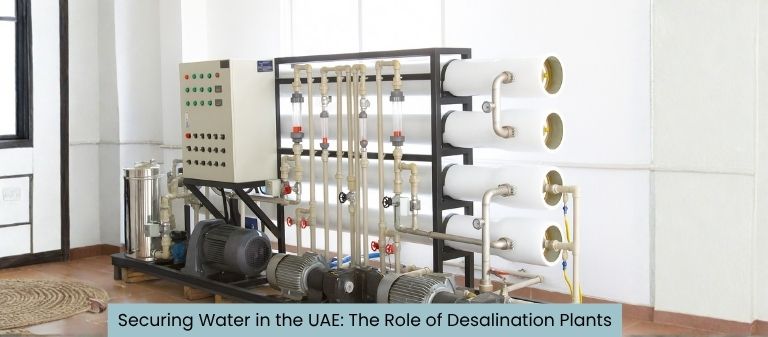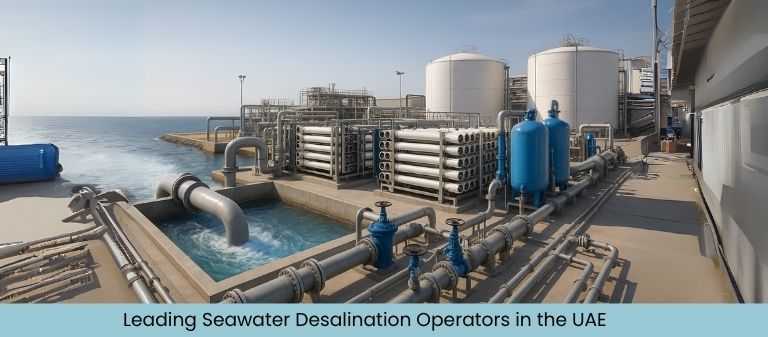
The United Arab Emirates (UAE) is one of the most arid regions in the world, with minimal freshwater resources and a rapidly growing population. As the country continues to develop economically, the demand for water—particularly in the agriculture, industrial, and residential sectors—has skyrocketed. Freshwater resources, however, are extremely limited, making the UAE heavily reliant on desalination technologies. Among the various methods for securing fresh water, seawater desalination plants have emerged as a vital solution to meet the UAE’s growing water demands.
This article delves into the role of seawater desalination plants in securing the UAE’s water resources, examining the technology behind desalination, the challenges faced by the country, and how the UAE has become a global leader in seawater desalination.
Water scarcity is a persistent and critical issue in the UAE. The country’s natural freshwater resources are limited to underground aquifers, many of which are non-renewable and over-exploited. The UAE also receives very little rainfall, averaging just 3-5 cm annually in most parts of the country. In fact, it is one of the driest countries on Earth, making water an increasingly scarce and valuable resource.
As the population continues to grow—along with increased demands from tourism, agriculture, and industry—the country’s reliance on freshwater from natural sources has become unsustainable. This has led to a growing dependence on seawater desalination plants to provide an alternative, reliable source of freshwater for both domestic use and industrial applications.
Seawater desalination is the process of removing salt and other impurities from seawater to make it safe for human consumption and industrial use. In the UAE, seawater desalination systems provide more than 90% of the country’s drinking water, and they play a key role in sustaining the economy, particularly in areas like agriculture, tourism, and manufacturing, all of which are dependent on water.
Desalination technologies in the UAE primarily rely on two methods: thermal desalination and reverse osmosis (RO). The UAE has invested heavily in both techniques, but reverse osmosis seawater desalination plants have become the most commonly used method in the country due to their lower energy consumption and ability to be scaled more efficiently.

The UAE is home to some of the world’s largest and most advanced seawater desalination plants, many of which are located in the coastal cities of Dubai and Abu Dhabi. These plants are operated by government-owned utilities such as the Abu Dhabi Water and Electricity Authority (ADWEA), Dubai Electricity and Water Authority (DEWA), and Sharjah Electricity and Water Authority (SEWA). The plants are often part of larger infrastructure projects designed to meet the country’s ever-growing water demand.
Some of the largest and most innovative seawater desalination plants in the UAE include:
While seawater desalination has proven to be a reliable solution for the UAE’s water scarcity, it does come with challenges that the country continues to address:
The UAE is constantly striving to innovate and improve its desalination capabilities. Some of the most promising developments in the field include:
As the UAE continues to experience rapid growth and development, seawater desalination plants will remain a cornerstone of its water supply strategy. The country has made significant strides in adopting state-of-the-art desalination technologies, ensuring that its water resources can meet the needs of its population and industries. While challenges such as energy consumption, cost, and environmental impact remain, the UAE’s commitment to sustainable desalination practices, combined with innovations in renewable energy and desalination technologies, positions it as a global leader in water security.
By embracing cutting-edge technologies and sustainable practices, the UAE is securing its future water resources and ensuring that its citizens and industries will have access to clean, freshwater well into the future. Through its innovative seawater desalination plants, the UAE is proving that even the most water-scarce regions can overcome the challenges of water scarcity and thrive in an increasingly resource-constrained world.


Olivia : +86 15168506513
Lydia : +86 15253672282

